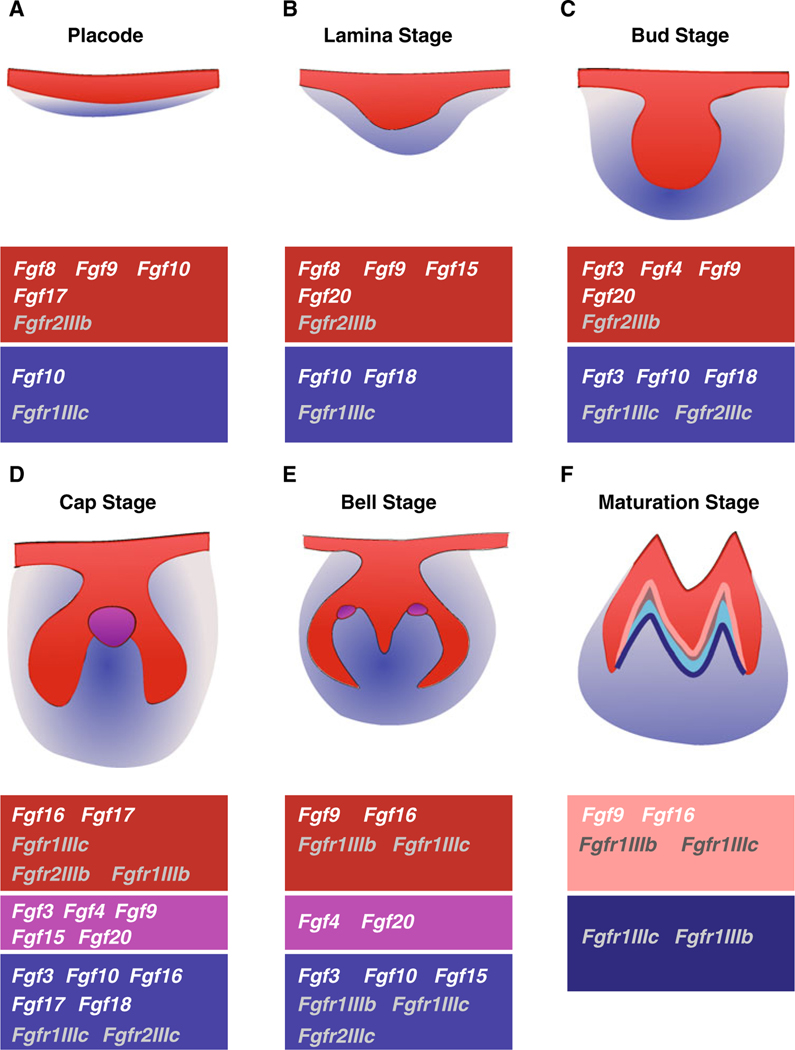Fig. 1.
Expression of FGFs and their receptors in molar development. a At the placode (initiation) stage, Fgf8, Fgf9, Fgf10 and Fgf17 are expressed in epithelium (red) together with Fgfr2IIIb. Fgf10 is also expressed in mesenchyme (blue) with Fgfr1IIIc. b At the dental lamina stage, expression of Fgf8, Fgf9, Fgf15, Fgf20 and Fgfr2IIIb is localized in epithelium and Fgf10, Fgf18 and Fgfr1IIIc in mesenchyme. c At bud stage, Fgf3, Fgf4, Fgf9, Fgf20 and Fgfr2IIIb are expressed in epithelium and Fgf3, Fgf10, Fgf18, Fgfr1IIIc and Fgfr2IIIc are expressed in mesenchyme. d At cap stage, Fgf16, Fgf17 and Fgfr1IIIb, Fgfr1IIIc and Fgfr2IIIb are expressed in dental epithelium (red). Expression of Fgf3, Fgf4, Fgf9, Fgf15 and Fgf20 is restricted to the enamel knot (violet). Mesenchyme forms the dental papilla (blue) at this stage which expresses Fgf3, Fgf10, Fgf16, Fgf17, Fgf18, Fgfr1IIIc and Fgfr2IIIc. e At bell stage, Fgf9, Fgf16, Fgfr1IIIb and Fgfr1IIIc are expressed in dental epithelium. Fgf4 and Fgf20 are expressed only in the secondary enamel knots (violet). Fgf3, Fgf10, Fgf15, Fgfr1IIIb, Fgfr1IIIc and Fgfr2IIIc are expressed in the mesenchyme of the dental papilla. f During maturation stage, the expression of Fgf9 and Fgf16 is localized to ameloblasts (pink) derived from the epithelium (red) together with Fgfr1IIIb and Fgfr1IIIc. Only odontoblasts (dark blue) from mesenchymal cells (light blue) retain expression of Fgfr1IIIb and Fgfr1IIIc. At this stage, ameloblasts secrete enamel matrix (grey) and odontoblast secrete dentin (cyan)

